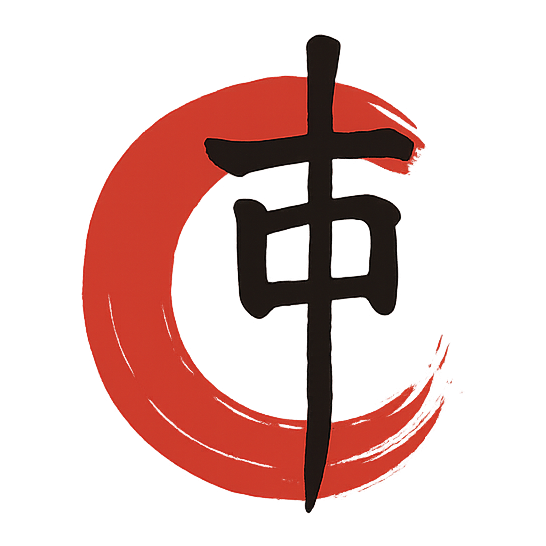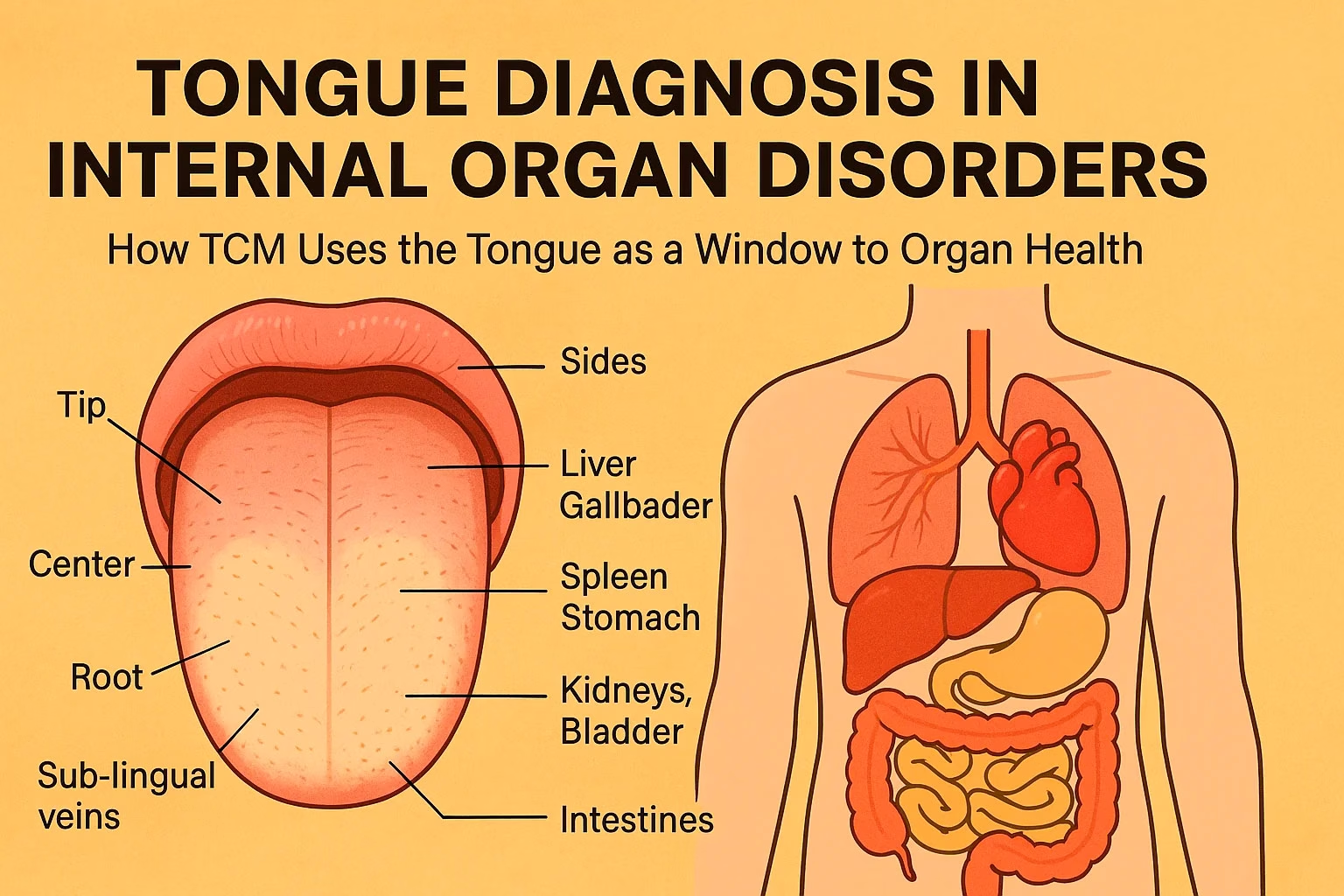How TCM Uses the Tongue as a Window to Organ Health
🔶 Introduction
In Traditional Chinese Medicine (TCM), the tongue is more than a muscular organ for speech and taste—it is a diagnostic map of internal organ function. Through tongue diagnosis, a skilled practitioner can assess the state of Qi, Blood, Yin-Yang balance, and the health of the Zang-Fu organs.
Unlike modern diagnostic tools that require lab work or imaging, tongue observation offers non-invasive, real-time clues about pathological changes in the body. This article explores how TCM interprets tongue color, shape, coating, and moisture to detect imbalances in internal organ systems, and how this technique is used in clinical diagnosis and treatment.
🔶 The Tongue as a Diagnostic Mirror
The tongue is considered a “microcosm of the body” in TCM, where each region corresponds to a different organ system. It is observed under natural light, typically in the morning, with attention to the following elements:
- Color
- Shape and size
- Tongue coating (fur)
- Moisture
- Movement (tremor, stiffness)
🔶 Tongue Map: Regional Organ Correspondence
| Tongue Area | Corresponding Organ(s) |
|---|---|
| Tip | Heart and Lung |
| Center | Spleen and Stomach |
| Sides | Liver and Gallbladder |
| Root (Back) | Kidneys, Bladder, Intestines |
| Sub-lingual veins | Blood stasis, Liver pathology |
This topographical model allows practitioners to localize dysfunction and observe patterns over time.
🔶 Key Tongue Features and Their Diagnostic Meanings
✅ 1. Tongue Body Color
- Pale: Indicates Qi and Blood deficiency, often due to Spleen or Kidney weakness.
- Red: Reflects Heat, especially if localized (e.g., tip = Heart Fire).
- Dark Red / Crimson: Sign of Yin deficiency with internal Heat or febrile diseases.
- Purple or Bluish: Sign of Blood stasis or Cold congealing, often in the Liver or Heart.
✅ 2. Tongue Shape and Size
- Swollen: Spleen Qi or Yang deficiency, with Dampness accumulation.
- Thin: Yin or Blood deficiency, often seen in chronic conditions.
- Teeth marks (scalloped): Spleen Qi deficiency with Damp retention.
- Cracks: Yin deficiency, especially if dry; deep cracks may reflect Stomach or Heart issues.
✅ 3. Tongue Coating (Fur)
- Thin white coat: Normal or early-stage disease.
- Thick white coat: Cold-Dampness, often in the Spleen or Lungs.
- Yellow coat: Internal Heat, especially in the Stomach or Gallbladder.
- Greasy/slippery: Damp-Phlegm, food stagnation.
- Peeled or no coat: Yin deficiency, especially in the Stomach.
✅ 4. Moisture
- Dry tongue: Heat damaging fluids or Yin deficiency.
- Overly moist or wet: Yang deficiency, Cold-Damp accumulation.
✅ 5. Tongue Motion
- Trembling: Qi deficiency or internal Wind (e.g., Liver Wind).
- Stiff: Heat blocking the Heart or pericardium; Wind-stroke.
- Deviated: Stroke or early sign of Wind-stroke.
- Protruding or wagging: Heat disturbing the Shen, especially in children.
🔶 Clinical Patterns and Tongue Examples
| Pattern | Tongue Signs | Possible Diagnosis |
|---|---|---|
| Spleen Qi Deficiency | Pale body, teeth marks, white coating | Fatigue, poor appetite, loose stools |
| Liver Qi Stagnation | Slightly red sides, thin white coat | PMS, irritability, chest tightness |
| Stomach Heat | Red center, yellow coating | Bad breath, acid reflux, thirst |
| Kidney Yin Deficiency | Red tongue with cracks, little/no coat | Tinnitus, night sweats, insomnia |
| Damp-Phlegm in Lungs | Swollen, greasy white coat | Cough with sputum, chest heaviness |
🔶 Tongue Diagnosis in Modern Clinical Use
Tongue diagnosis is often used alongside pulse diagnosis and questioning to create a holistic assessment. It is particularly useful in:
- Chronic conditions: Digestive disorders, fatigue, emotional imbalance.
- Tracking progress: Comparing tongue changes over treatment course.
- Remote consultation: Increasingly used in telemedicine and photo-based diagnosis.
Some AI-assisted systems are now integrating tongue analysis into digital TCM diagnostics, showing how ancient methods are finding new applications.
🔶 Practical Tips for Self-Observation
While full diagnosis should be left to trained practitioners, individuals can monitor their own tongue for early signs of imbalance:
- Check in natural morning light
- Avoid brushing the tongue before inspection
- Look for changes over time, not single-day differences
- Record with photos to compare progress
🔶 Conclusion
The tongue is a visible, accessible, and dynamic indicator of internal health in Traditional Chinese Medicine. With careful observation of its color, coating, shape, and region, practitioners can uncover deep insights into the condition of Zang-Fu organs, fluid balance, and pathogenic influences.
In a world increasingly interested in preventive and holistic healthcare, tongue diagnosis remains a vital and enduring tool for personalized medicine—rooted in tradition, yet full of modern potential.


发表回复